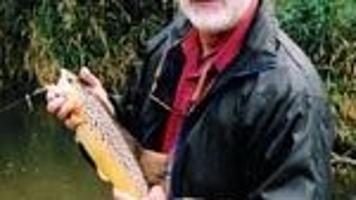Randall goes on to explain how hearing helps the trout feed. “It offers information that can be obtained from a greater distance then it can through their sense of vision alone. Both the sense of hearing and the sense of smell are referred to as a long range senses.” This means that the trout can locate food better through their sense of hearing and smell than through vision. That is one of the reasons why spinning is good because the trout can hear the spinner turning. I also remember when my dad was fly fishing with a small golden spinner in front of his streamer fly and he said, “That spinner is attracting the trout to hit the fly!”
“Living as prey, especially during the early part of their lives, trout never lose their innate wariness. Their acute hearing also serves as a predator-alert system, an informational network they’ve learned to rely on to stay alive. Trout are always alert for the sound of an approaching predator. Even the stealthy heron, stalking quietly through the shallows, makes some noise in spite of its careful steps.” Trout can hear a man walking on the bank 50 feet from the pool. So when I am approaching a good pool with trout in it, I walk around the pool about 60 feet so as not to scare the trout.
Frequently, I hear fishermen say they crawl fifteen feet to reach the pool and then, while lying on the ground, cast into the water. I tell them, “Get in the water and fish upstream in the blind spot of the fish.” Trout always face into the current and I know bigger trout can identify you at 30 degrees left and right of center. Smaller trout, of 12 inches or less, can identify you at 45 degrees left or right of center. Keep those statistics in mind when wading up steam to fish for trout. The larger trout have bigger eyes to see you approaching them from behind.
Credit: Source link






























